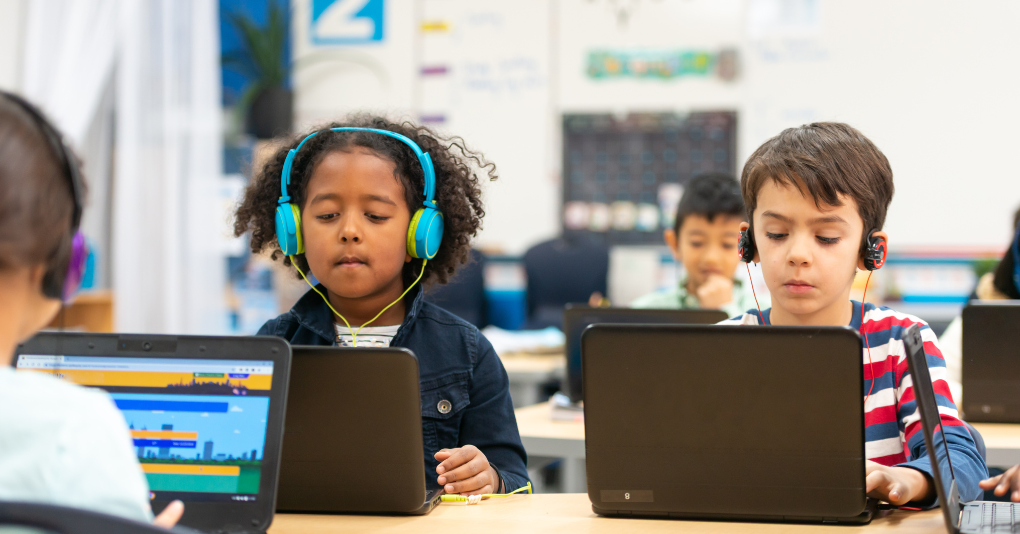The last few years have witnessed a dramatic change in the learning model. The way students are being taught today is very different from the teaching methods that were adopted a few decades back. Technology has brought about various changes in the way education is delivered and received.
From self-learning to flipped classroom approach, we have seen technology make a considerable impact on the learning and teaching methodologies.
With numerous benefits to offer, digital learning has become an important part of the education system. Information and communication technology (ICT) brings in multiple benefits for digital learning and student-centric engagement. The ICT trends in education shaped the schools and universities to implement the latest in education technology to improve the teaching and learning process.
Collaborative Learning
The innovative trends in educational technology have made it possible for everyone to stay connected. The impact of the current trends of ICT in the field of education has paved multiple options. We connect, discuss and enact upon situations collaboratively. This collaborative approach has gained importance in the learning process as well. In a classroom learning model, teachers encourage collaboration by assigning group activities and tasks.
When students team up together to work on a project or solve a problem, it builds their collaborative skills. Working together improves their understanding and increases engagement.
Although eLearning is quite popular, it includes collaboration with features to share and discuss. In a traditional teaching model, a teacher enters a classroom, speaks for about 30 minutes, and leaves when the bell rings. But today, technology has bridged the gap between teachers and students.
You would find teachers and students interacting with each other more often. Teachers are far more accessible now and act as mentors to help students in their overall development. This collaborative learning approach helps students to interact with their peers and build their interpersonal skills.
Learning Outside the Classroom Environment
Various technology trends in education keep changing the digital world. Mobile-based devices have taken learning outside of the classroom. With mLearning and eLearning growing in popularity, students can learn at their own pace and time. This trend is expected to keep up as it is a convenient method of delivering as well as receiving education. Designing mobile-first responsive content helps students to go through their courses anytime and anywhere.
Internet connection is no longer an issue with offline reading capabilities. eBooks can be embedded with many features to enhance the learning experience. Complete with annotation tools, bookmarks, hyperlinks, dictionary, search feature, an eBook makes learning more flexible. Most of the educational institutes today have adopted mobile learning into their learning ecosystems, benefiting students and teachers alike.
Social Media in Learning
Who would have ever thought that social media would one day be accepted as part of the learning process? The technological trends in teaching and learning are rapidly changing every day. With kids as young as eleven having social media profiles on various platforms, you can’t really expect to keep them away from social media for too long. So, teachers found a way to utilize this trend and turn it into a powerful tool for enhancing the learning process.
Educational institutes have started using social media as a communication tool, where students can interact with their peers and faculty members. Usually, students share videos and images with their friends and followers. But with social features embedded in their eBooks, they can share study materials, opinions, projects etc.
They can comment on someone else’s post or share links to other websites, all the while building peer networks and enhancing the online learning experience. Teachers allow the use of social media as part of the learning model because it helps students to stay interested in their course and increases engagement. Social media is here to stay and incorporating it into learning modules will build a culture of collaboration and sharing, leading to an improved learning experience.
Interactivity in Classroom
Bringing technology into the classroom has made classrooms lively and interactive. With eBooks, the course content can be embedded with videos, augmented reality, audio files etc. Unlike a printed book, eBook allows for more interaction to take place in the classroom. The flipped classroom model has allowed students to do all the learning at home and all the practical work at school.
All these new technologies have brought about a change in the way that classes used to function traditionally. Teachers can now assist and guide students with their homework in class.
They can have discussions and activities in classrooms, creating an interactive environment where students are completely involved in the learning process. Creating interaction and engagement has become a priority for many schools and universities. This style of learning has seen growth in recent years for its ability to keep students engaged in the classrooms. Here’s a list of the 10 best ebook creators
Data Management & Analytics
Managing data has become ever so convenient and important with the advent of technology in the education system. Teachers can now have complete analytics of a student’s performance, such as the number of tests attempted, chapters completed etc.
Homework and assignments can be assigned to the entire class at once and teachers can evaluate the results online. This kind of automation in classroom activities has enabled teachers to focus more on their course modules and offer in-depth guidance.
Analytics has become an important part of any online learning model as it enables the measurement of a child’s engagement and academic performance. According to the data available, teachers can develop action plans to improve students’ performance.
Immersive Learning with AR and VR
With the introduction of augmented reality and virtual reality into the education system, the classroom learning experience has undergone a tremendous change. Learning has become much more immersive than traditional methods. Unlike plain images and hands-on experiments in the lab, students can now view enhanced versions of the image and objects on their mobile devices. The augmented and virtual reality trends in education technology are making learning a compelling experience.
While augmented reality provides an enhanced view of a real image, virtual reality gives a false perception of reality around them. Both these techniques have taken digital learning to new dimensions. AR and VR are increasingly being used to explain complex concepts. From atoms to planets, and from Egypt to the Colosseum, students can explore and learn so much more.
Gamification in Education
The latest trends in educational technology have been gaining popularity for the simple reason that it increases student engagement. We have seen gamification being used in classrooms in different forms such as leaderboards, reward points, badges, stickers etc. Of all the trends in education technology, gamification is the one trend which guarantees an increase in participation, engagement, and competition.
Students become actively involved in the classroom activities to increase their scores and leaderboard rankings. And the need to lead the scoreboards results in improved performance and better retention.
Gamification incentivizes students to learn and practice, improving the overall learning process. So, teachers use gamification to increase engagement, boost motivation and create an interactive classroom environment.
Personalized Learning
Personalized learning is an approach to education that tailors teaching and learning to individual students’ needs and preferences. In 2024, personalized learning could become even more prevalent thanks to advances in artificial intelligence and data analytics. Teachers and educational technology platforms may use AI algorithms to analyze student data and provide personalized recommendations on content, pacing, and learning strategies.
Global Online Learning Communities
Online platforms connect students and educators from around the world. This global perspective fosters cultural understanding and collaboration. It also opens opportunities for diverse learning experiences and cross-cultural projects.
12. Adaptive Learning Technologies
Adaptive learning technologies offer a bespoke educational journey, adjusting content and difficulty based on individual learner responses. These technologies identify student strengths and weaknesses, providing tailored support and challenges. The result is a more efficient learning process, catering to the unique needs of each student.
Microlearning
Microlearning breaks down educational content into small, manageable units, making it easier for learners to absorb and retain information. This approach is particularly effective in corporate training and higher education, where it can be used to deliver concise lessons designed to fit into busy schedules.
Microlearning modules often incorporate multimedia elements, enhancing engagement and learning outcomes.
It was only a matter of time before the education sector was taken over by technology. Although the acceptance rate was low in the beginning, it gradually gained momentum. Teaching and learning methods have undergone a significant change due to all the trends in education technology. Every year, new trends emerge to provide something new to the learners.
They say change is constant, similarly, innovations in the field of technology are also constant. And certain innovations can be implemented in the education system for improving their learning and development process. The result of these innovations become a trend which then leads to better teaching and learning techniques.
Share this post





Be the first to comment on this post